If you’re looking for a sweet, juicy snack that’s packed with nutrition, then figs are the perfect choice.
But what happens when you don’t have any figs on hand?
Don’t worry – there are plenty of other fruits and vegetables that can be used as substitutes for figs in recipes.
From apples to dates, here is a list of the 10 best substitutes for figs.
With these swaps, you’ll still get all the health benefits and delicious flavor of fresh figs!
What Are Figs?
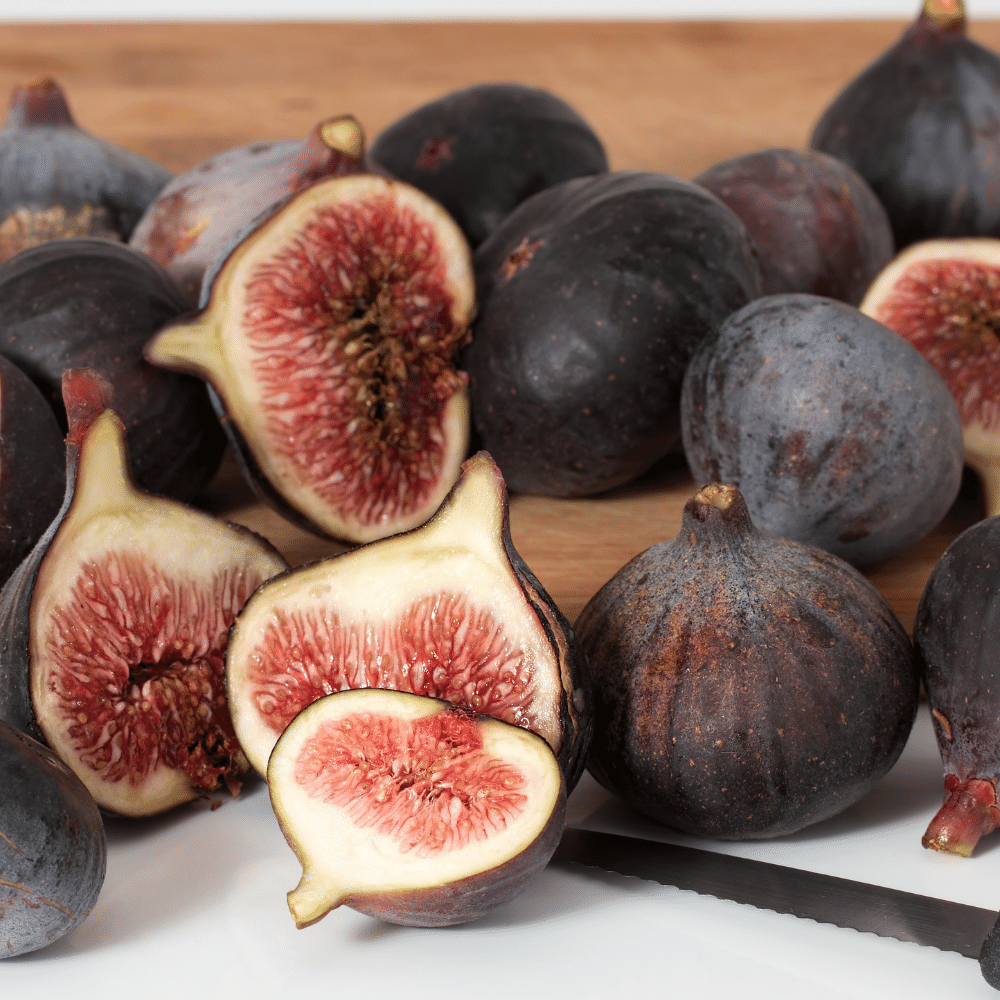
Figs are a type of fruit that is native to the Middle East and western Asia.
They have been cultivated since ancient times, and were even mentioned in the Bible.
Figs come in many varieties, including black mission figs, brown turkey figs, kadota figs, calimyrna figs, and more.
The most common variety is the black mission fig which has a dark purple-brown skin with pinkish flesh inside.
Figs can be eaten fresh or dried; they are often used as an ingredient in baked goods such as cakes and cookies.
Fresh figs have a sweet flavor with hints of honey and citrus; when dried they become sweeter and chewier.
Figs can also be cooked into jams or preserves for use on toast or other dishes.
In addition to being eaten alone or added to recipes, they can also be used as garnishes for salads or desserts.
The 10 Best Substitutes For Figs
Figs are a unique and delicious fruit, but they can be hard to find in some areas.
Here we look at ten alternatives that can give you the same sweetness and texture as figs:
1 – Dried Figs
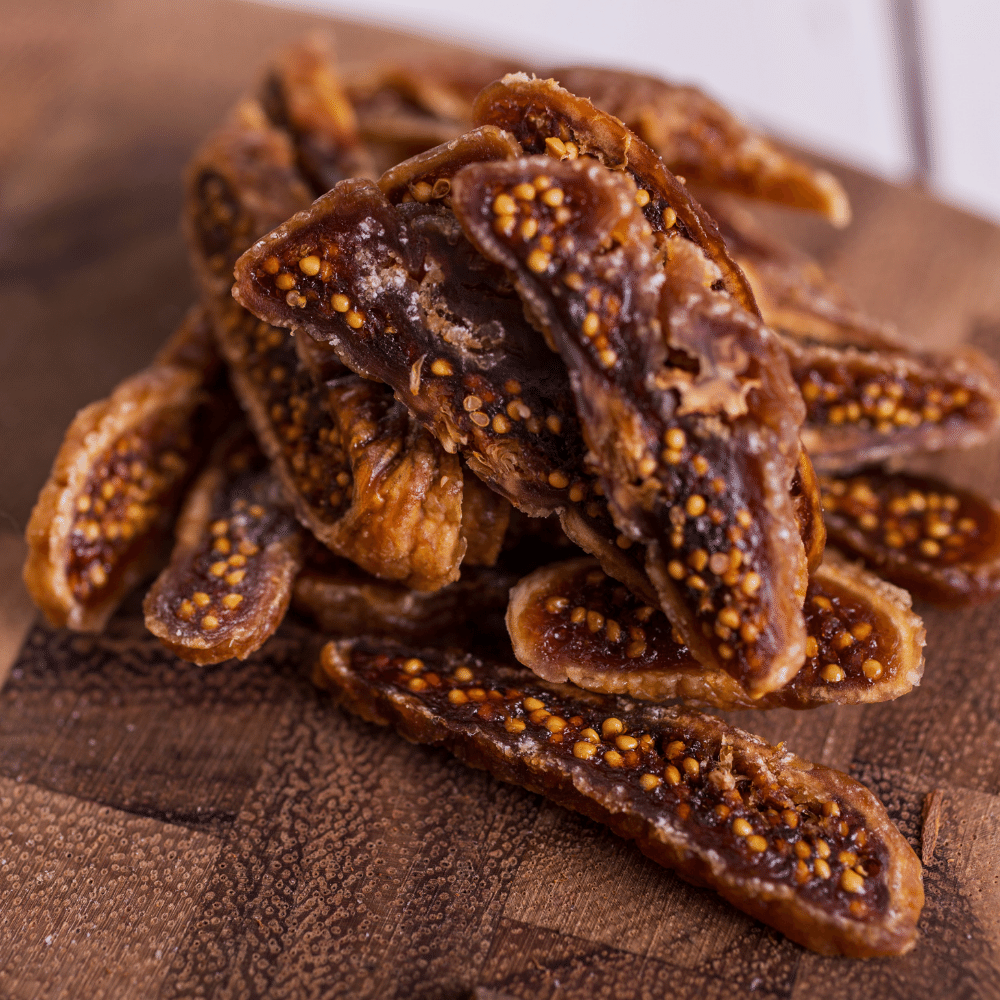
Dried figs are a great alternative to fresh figs when you’re out of the latter.
These dried fruits are packed with essential minerals such as potassium, magnesium, iron and calcium – making them an excellent source of dietary fiber.
Their sweet taste is intensified during the drying process, giving them a chewy texture that can be enjoyed as-is or added to recipes.
Dried figs can be used in baking, salads, smoothies and even savory dishes like stews and curries.
They also make for a delicious snack when paired with cheese or nuts.
For those looking for an easy way to add more nutrition into their diet without sacrificing flavor, dried figs are definitely worth trying!
2 – Fig Jam
https://www.pinterest.com/pin/809170258065109329/Fig jam is a delicious way to enjoy the sweet flavor of figs without having to source fresh ones.
This jam is made from cooked down figs, sugar, and sometimes lemon juice or other spices.
The result is a thick spread with an intense sweetness that’s balanced by the tartness of the lemon juice.
It has a slightly grainy texture due to the tiny seeds in the figs, and its color can range from almost black to green depending on which variety of figs are used.
Fig jam makes for an excellent topping on toast or crackers, as well as a great addition to sauces and glazes for meats like pork chops or chicken breasts.
It also pairs nicely with cheese platters and charcuterie boards, adding just enough sweetness to balance out savory flavors.
3 – Pears
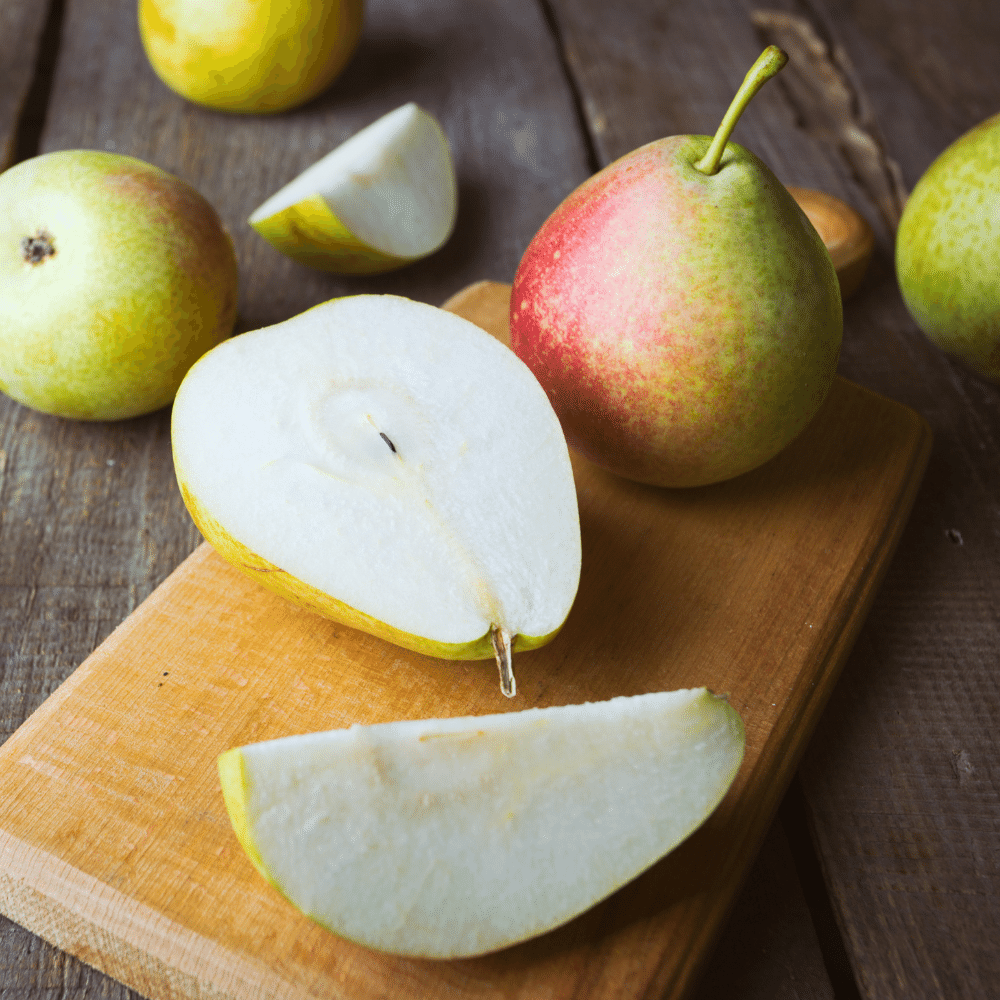
Pears are a delicious and versatile fruit that can be enjoyed in many different ways.
They have a flavor that ranges from tangy to sweet to spicy, and a texture that can be crisp, buttery, or somewhere in between.
There are several varieties of pears available, each with its own unique shape and color.
Anjou pears have a rounded shape and yellow-green skin while Red Anjou pears have bright red skins.
Bartlett pears are more elongated with yellow-green skin while Bosc pears have an elongated neck and brownish-yellow skin.
These fruits make great snacks when eaten raw but they also work well cooked or baked into desserts like pies or tarts.
Paired with cheese, they make for an excellent appetizer as well!
For those looking for an alternative to figs in recipes, try substituting them with pears – just remember to adjust the cooking time accordingly depending on the variety you choose!
4 – Prunes

Prunes are a great substitute for figs, as they have a similar texture and sweetness.
Prunes are dried plums that come in various shapes and sizes, ranging from small to large.
They can be found in most grocery stores and health food stores.
The flavor of prunes varies depending on the type of plum used; some may be intensely sweet while others may have a more subtle sweetness.
It is important to sample the prune before using it in recipes so you know what kind of flavor you’re getting.
Prunes are incredibly versatile and can be used in both sweet and savory dishes.
They make an excellent addition to salads, oatmeal, yogurt parfaits, or even baked goods like muffins or cakes!
They also pair well with other fruits such as apples or pears for added sweetness and texture.
Prunes can also be cooked down into a thick syrup which makes them perfect for glazing meats or vegetables.
5 – Apricots

Apricots are a delicious and versatile stone fruit that can be used in both sweet and savory dishes.
When ripe, they have a juicy texture with a hint of tartness that makes them perfect for snacking or adding to salads.
Their flavor is similar to peaches, but slightly more acidic – unripe apricots will be more sour than those that are fully ripened.
Apricots are also great for cooking and baking as they hold their shape well when heated.
They can be roasted, grilled, poached, or stewed; added to jams and jellies; or even pureed into sauces.
If you’re out of figs, why not try using apricots instead?
Their unique flavor profile adds an extra layer of complexity to any dish!
6 – Medjool dates

Medjool dates are a type of large, sweet date that originated in Morocco.
They have a rich, almost caramel-like taste and a soft, chewy texture that makes them perfect for snacking or baking.
These dates are packed with essential vitamins and minerals like potassium, magnesium, iron, and calcium.
When substituting Medjool dates for figs in recipes, you may need to adjust the amount used as they tend to be sweeter than figs.
Medjool dates can be eaten fresh or dried and can also be chopped up and added to salads or oatmeal for an extra boost of sweetness.
Their versatility makes them an ideal pantry staple – try using them as a natural sweetener in smoothies or baked goods instead of sugar!
7 – Pluots

Pluots are a hybrid fruit that is the result of crossing plums and apricots.
They have more characteristics of plums than apricots, with juicy texture and tangy skin like a plum but floral flavors like an apricot.
These fruits are incredibly sweet and intensely flavorful, making them perfect for snacking or adding to desserts.
When substituting pluots for figs in recipes, you may need to adjust the cooking time as they tend to cook faster than figs due to their higher sugar content.
Their unique flavor makes them great for jams, jellies, sauces, pies, tarts and other baked goods. They can also be used in savory dishes such as salads or stir-fries. Pluots make a delicious addition to any meal!
8 – Golden Raisins
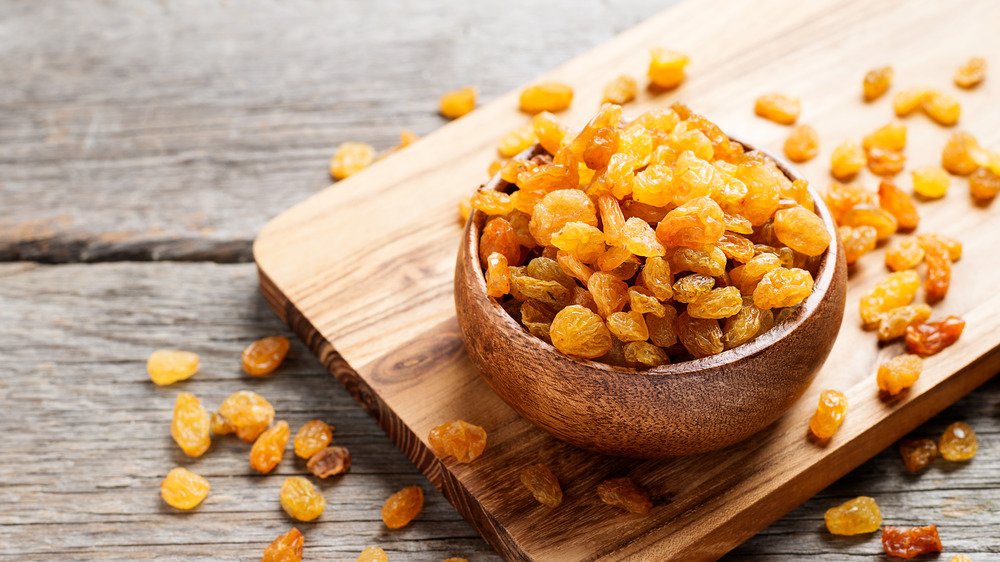
Golden raisins are a great substitute for figs when you’re in a pinch.
These plump, sweet-tart dried fruits are made from sultana grapes that have been treated with sulfur dioxide to give them their golden hue.
Their flavor is reminiscent of honey and apricots, making them an ideal addition to salads, grain dishes, dips, salmon, cauliflower and more.
Golden raisins can also be used as a topping for oatmeal or yogurt parfaits or added to baked goods like muffins and scones.
They provide a subtle sweetness without overpowering the other flavors in the dish.
9 – Quince paste
https://www.pinterest.com/pin/718605684307481008/Quince paste, also known as membrillo, is a thick jam made from the fruit of the quince tree.
It has a sweet taste with hints of floral notes and is popular in Southern Europe and the Middle East.
The texture is dense and chewy, similar to that of figs but slightly firmer.
Quince paste can be used as an accompaniment to cheese or enjoyed on its own as a snack. It can also be used in baking recipes such as tarts or pies for added sweetness and flavor.
For those looking to substitute figs in recipes, quince paste makes an excellent alternative – however, you may need to adjust the amount when adding it into cooking mixtures due to its intense flavor.
10 – Cranberries

Cranberries are a tart and tangy fruit that can be used in both sweet and savory dishes.
Though they have a notoriously bitter, sharp taste when eaten raw or unsweetened, the addition of sugar helps to balance out their flavor.
This bitterness is due to the high tannin content of cranberries – tannins are plant compounds also found in coffee, wine, and dark chocolate.
When substituting for figs, cranberries can be cooked down into a jam-like consistency or added to baked goods like muffins or pies for an extra burst of flavor.
They’re also great for adding texture and color to salads and side dishes.
For those looking for something more savory, try using them as part of a marinade or sauce with other ingredients like garlic and ginger.
Tips for Substituting Figs
When substituting figs in a recipe, consider the following tips:
- Texture: Figs have a unique texture that is soft and slightly chewy. If a recipe calls for dried figs, you can use raisins or dates as a substitute. If fresh figs are called for, prunes or apricots can be used as a substitute.
- Sweetness: Figs are naturally sweet, so if you are substituting with a less sweet fruit, consider adding some extra sweetener to the recipe.
- Flavor: Figs have a distinct and complex flavor that can be hard to replicate. If you are substituting with a different fruit, try to choose one with a similar flavor profile, such as apricots, plums or peaches.
- Moisture: Figs are a very moist fruit, so if you are substituting with a drier fruit, consider adding some extra liquid to the recipe.
- Cooking time: Figs cook quickly and should be added to a recipe near the end of the cooking time. If substituting with a fruit that takes longer to cook, adjust the cooking time accordingly.
- Quantity: The quantity of figs required in a recipe may vary depending on the recipe and the type of figs used. Adjust the quantity of the substitute fruit accordingly.
FAQ
What can replace dried figs in a recipe?
If you don’t have dried figs on hand, there are several other ingredients that can be used as a substitute.
Dried apricots, dates, prunes and raisins all make good replacements for dried figs in recipes.
You can also use fresh or frozen figs if they are available.
If using fresh or frozen figs, it is best to cook them first before adding them to the recipe.
Other fruits such as apples, pears and peaches can also be used in place of dried figs; however these will not provide the same flavor profile as dried figs do.
What fruit taste similar to figs?
Figs have a unique flavor that is sweet and slightly tart.
Fruits that share similar flavors to figs include dates, prunes, raisins, apricots, peaches, pears and apples.
All of these fruits are sweet with a hint of tartness.
They also all have a soft texture when ripe.
Other fruits that may be less familiar but still taste similar to figs include quince, guava and persimmon.
Can I substitute dates for figs in a recipe?
Yes, you can substitute dates for figs in a recipe. Dates are a sweet and chewy dried fruit that have a similar texture to figs when cooked.
They also have a slightly different flavor profile than figs, but the sweetness of both fruits is comparable.
When substituting dates for figs in recipes, it’s best to use pitted dates as they will be easier to work with and blend better into the dish.
You may need to adjust the amount of sugar or other sweeteners used in the recipe depending on how sweet your dates are.
Additionally, if your recipe calls for fresh figs, you should consider using Medjool dates as they tend to be larger and moister than other varieties of date.
What do figs taste like?
Fresh figs have an incredibly sweet, honeyed flavor with a soft, squishy texture. The seeds provide a pleasant crunchy contrast to the flesh of the fruit.
Dried figs have an even more concentrated sweetness and chewy texture; the seeds become nearly undetectable when dried.
The taste of figs is often described as being similar to dates or raisins, but with its own distinct flavor profile that makes it stand out from other fruits.
Figs pair well with savory dishes like cheese platters and salads, as well as desserts like ice cream and cakes.
Conclusion
In conclusion, figs are a delicious and versatile fruit that can be used in a variety of dishes.
However, if you don’t have figs on hand, there are plenty of other fruits and ingredients that can be used as a substitute.
The best substitutes for figs are dried figs, fig jam, pears, prunes, apricots, medjool dates, pluots, golden raisins, quince paste, and cranberries. Each of these ingredients has its own unique flavor and texture, so you can experiment with different combinations to find the perfect flavor for your dish.
Using a combination of these ingredients is a great way to add depth and complexity to your dish, and will ensure that you never have to go without figs again.
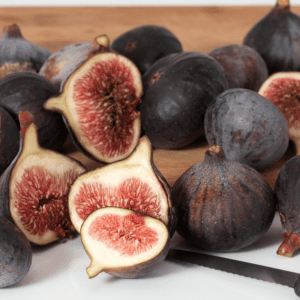
The 10 Best Substitutes For Figs
Ingredients
- Dried Figs
- Fig Jam
- Pears
- Prunes
- Apricots
- Medjool dates
- Pluots
- Golden Raisins
- Quince paste
- Cranberries
Instructions
- Pick your favorite substitute from the list above.
- Follow cooking directions for your selected substitute with the proper ratio of ingredients.
Hi, I'm Benjamin. I love cooking, long walks, and my girlfriend! Here you’ll find simple and delicious recipes that you can make in 30 minutes or less.

